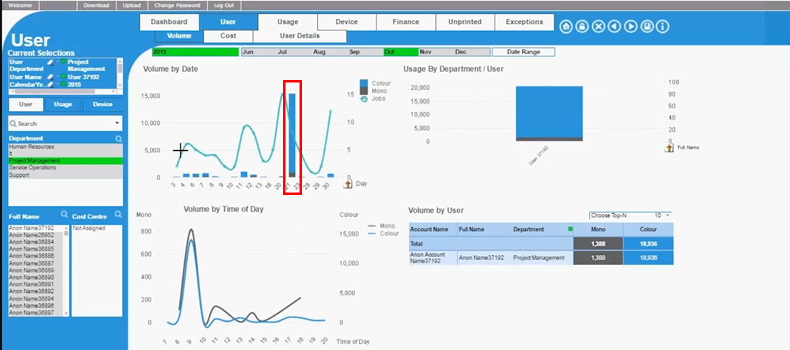Stay up to date with our latest news and insights
Supporting description on the types of content that feature in the blog.
29 January 2019

The first hurdle of digitisation is knowing where to start.
It’s likely that your business relies on paper for a lot of processes and this creates a lot of different start and end points for what to digitise.
One way to think about the starting point is by identifying and choosing paper heavy processes in the company, finding out which part of the process uses the most paper and then creating a plan to implement digital alternatives and cut the paper usage to a minimum.
Simple, right?
In theory, yes, in practice, not so much. Unless each department can already tell you how much paper they’re using and which processes use the most paper, then you’re going to have to find another way to identify the heavy paper usage, and we’re not suggesting sitting by each printer with a good book…

Identifying heavy paper processes is another job for print analytics, and more specifically, user analytics.
Implementing user analytics will allow you to identify high-volume by flagging up where print usage is higher than other departments, and within a department, it can show you when, who and how something was printed, allowing you to specifically identify a high-volume printing job.
Taking it a step further, you can identify the documents being printed and with a bit of investigation (or an email to the department head…) you can find out what this high-volume process is, further allowing you to scrutinise the process and find a way to optimise it, cutting print usage and digitising the process.
If you’re still not quite sure where to start, some of the departments which are commonly seen as high-volume departments include:
Accounts Payable
Human Resources
Contracts
Legal
Client Administration
Client communications
Due to the nature of these departments, they often have processes that include printing a lot of documents, from invoices and expenses to contracts, letters, memos, CVs etc., and are therefore ideal places to look into first.
Using analytics, a professional services company found that 60% of their total print was coming from printing training packs. A process that was seen as necessary for all training being conducted.
This equated to 70,000 pages each month. Although a lot, it might not be unusual for a company carrying out a lot of training. The issue with training printouts is that often they end up in the bin on the same day as the training, with 80% of the printed pages being disposed of by training attendees. Only 20% of the training material was found to be stored.
In an attempt to reduce this waste, the company reduced the number of pages being printed by only printing documents that were required for the actual training taking place and all reference documents are now provided electronically.
This change has massively reduced the amount of paper the company was printing for training and waste has also been reduced. This was the result of using user analytics to identify high-volume paper printing processes and finding ways to digitise the process.
Identify high-volume departments in your business with User Analytics!
Supporting description on the types of content that feature in the blog.

20-09-2024
Digital document management tools offer a range of compelling benefits for businesses, including a PDF editor, a file converter and a form generator. You can also integrate with digital signatures qui...

20-09-2024
When choosing a SaaS software to deal with your company’s PDF documents and enable forms to be digitally sent and signed, you’ll want a product that’s user-friendly and easy to use. With Tungsten’s Po...

11-07-2024
Belkin is a global technology company that provides high-quality electronics products, from wireless chargers to power banks. Their people-centric approach and best-in-class functionality have positio...